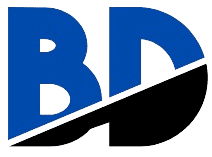In today’s dynamic work environments, managing workplace violence and aggression is crucial for ensuring the safety and well-being of employees. A significant tool in addressing these challenges is the Prevention and Management of Violence and Aggression (PMVA) training course. This comprehensive training program equips employees with essential skills to handle and mitigate aggressive situations effectively. This article explores the importance of PMVA training courses and how they address violence and aggression in the workplace, offering a detailed overview of their benefits, components, and implementation strategies.
Understanding Workplace Violence and Aggression
Workplace violence can manifest in various forms, including physical assaults, verbal threats, and psychological intimidation. Aggression in the workplace often stems from several sources, such as frustrated clients, disgruntled employees, or high-stress situations. The impact of workplace violence extends beyond physical harm; it affects employee morale, productivity, and overall organizational health.
Addressing violence and aggression requires a proactive approach that combines prevention, management, and intervention strategies. PMVA training is an essential component of this approach, providing employees with the tools and knowledge needed to manage and de-escalate potentially violent situations.
The Role of PMVA Training Courses
PMVA training courses are designed to prepare employees to handle violence and aggression effectively. These courses cover a range of topics and techniques tailored to different work environments and scenarios. Here’s how PMVA training addresses workplace violence and aggression:
- Conflict Management and De-escalation
One of the primary objectives of PMVA training is to teach conflict management and de-escalation techniques. Employees learn how to identify early signs of aggression and apply strategies to diffuse tense situations before they escalate. Techniques include:
- Effective Communication: Training emphasizes the importance of using calm, non-threatening language and active listening to address concerns and prevent conflicts from worsening.
- Non-violent De-escalation: Participants are taught methods to reduce aggression through verbal and non-verbal cues, including body language and tone of voice.
By equipping employees with these skills, PMVA training helps create a safer work environment and minimizes the likelihood of violent incidents.
- Breakaway Techniques
In cases where conflicts escalate to physical confrontations, PMVA training provides essential breakaway techniques. These techniques are designed to help employees safely disengage from aggressive individuals without causing harm. Key aspects include:
- Safe Disengagement: Training focuses on methods to break free from holds or grips without provoking further aggression.
- Personal Safety: Employees learn how to maintain personal safety while trying to avoid physical confrontation whenever possible.
Mastering these techniques enhances employees’ confidence in handling aggressive situations and reduces the risk of injury.
- Control and Restraint Techniques
For situations where physical intervention is necessary, PMVA training includes control and restraint techniques. These methods are designed to manage and contain aggressive individuals while ensuring their safety and the safety of others. Components include:
- Controlled Restraint: Techniques are taught to apply physical holds and restraints in a controlled manner, focusing on minimizing harm and ensuring compliance.
- Legal and Ethical Considerations: Training covers the legal and ethical aspects of using restraint, including adherence to relevant regulations and human rights considerations.
Properly implemented control and restraint techniques ensure that employees can manage aggression effectively while upholding safety and legal standards.
- Training Customization
PMVA training courses can be tailored to meet the specific needs of different work environments. Customization ensures that the training is relevant and applicable to the unique challenges faced by employees. Factors to consider include:
- Workplace Environment: Training can be adapted based on the type of workplace, such as healthcare settings, customer service environments, or educational institutions.
- Employee Roles: The course content can be adjusted to address the specific roles and responsibilities of different employees, ensuring that the training is practical and useful.
Customizing PMVA training enhances its effectiveness and ensures that employees are well-prepared for the challenges they may encounter in their roles.
Implementing PMVA Training in Your Workplace
Successfully integrating PMVA training into your workplace violence management plan involves several key steps:
- Assessing Training Needs
Start by assessing the specific needs and risks associated with your workplace. This assessment should include:
- Risk Analysis: Identify potential sources of violence and aggression within your organization.
- Employee Feedback: Gather input from employees about their experiences and concerns related to workplace violence.
This assessment helps determine the focus and scope of the PMVA training required for your organization.
- Selecting a Qualified Training Provider
Choose a reputable PMVA training provider with experience in delivering high-quality training programs. Consider the following criteria:
- Certifications: Ensure that the provider is certified by recognized organizations, such as the National Federation for Personal Safety (NFPS).
- Customization Options: Look for providers that offer customizable training programs to address your specific needs and scenarios.
- Trainer Expertise: Verify the qualifications and experience of the trainers to ensure they have the necessary expertise.
A qualified provider will deliver effective training that meets your organization’s needs and enhances employee safety.
- Developing a Training Plan
Create a detailed plan for implementing PMVA training within your organization. Key elements include:
- Training Schedule: Establish a schedule for initial training sessions and periodic refresher courses.
- Participant Selection: Determine which employees will participate in the training, considering their roles and responsibilities.
- Training Materials: Prepare or acquire the necessary materials and resources for the training.
A well-developed training plan ensures that the PMVA training is effectively implemented and integrated into your workplace violence management strategy.
- Monitoring and Evaluation
After implementing PMVA training, monitor its effectiveness and gather feedback from participants. Consider the following:
- Feedback Collection: Use surveys or interviews to gather feedback from employees about their training experience and its impact on their ability to manage violence and aggression.
- Incident Review: Analyze any incidents of workplace violence to assess whether the training has improved employees’ handling of such situations.
- Continuous Improvement: Use the feedback and incident analysis to make improvements to the training program and address any gaps.
Ongoing evaluation ensures that the PMVA training remains effective and relevant to your organization’s needs.
- Fostering a Culture of Safety
Integrating PMVA training into your workplace violence management plan is not just about training but also about fostering a culture of safety. Encourage a supportive environment where employees feel comfortable reporting incidents and seeking assistance. Promote:
- Leadership Support: Ensure that leadership is committed to promoting safety and supporting the implementation of PMVA training.
- Employee Engagement: Engage employees in safety initiatives and encourage them to apply their training in their daily work.
A culture of safety reinforces the importance of PMVA training and helps create a safer work environment for all employees.
Conclusion
Comprehensive PMVA training courses play a crucial role in tackling violence & aggression in the workplace. By providing employees with conflict management, breakaway techniques, and control and restraint skills, PMVA training equips them to handle aggressive situations effectively and safely. Integrating PMVA training into your workplace violence management plan involves assessing needs, selecting a qualified provider, developing a training plan, monitoring effectiveness, and fostering a culture of safety.
By implementing PMVA training, organizations can enhance employee safety, reduce the risk of violent incidents, and create a more secure and supportive work environment. With the right approach, PMVA training becomes a valuable component of your overall strategy for managing workplace violence and aggression.













